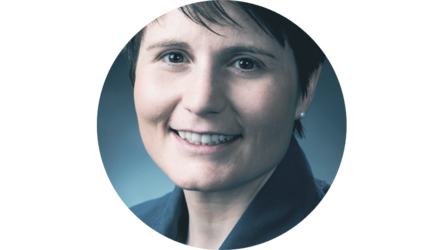From ESA lab to a historic drone race win
An autonomous drone has beaten human drone racing champions in an international competition for the first time. A team of scientists from Delft University of Technology has taken first place at the A2RL Drone Championship in Abu Dhabi – and the AI taking their drone to victory got off to a flying start in the lab of the European Space Agency’s Advanced Concepts Team just a few years prior.

Earlier this year, a team from the Micro Air Vehicle Laboratory, MAVLab, of Delft University of Technology, TU Delft, competed against 13 autonomous drones and three drone racing champions at the A2RL Drone Championship in Abu Dhabi – beating them all in a historic racing first.
The victorious team’s drone was able to dominate the competition thanks to neural network-based AI control systems, originally developed by ESA’s Advanced Concepts Team (ACT) – the agency’s multidisciplinary think tank focusing on emerging technologies.
ACT’s scientific coordinator Dario Izzo explains how the collaboration started: “A few years ago, the ACT started working on neural networks for spacecraft guidance.
“Typically, in space settings, Guidance and Control are two separate systems. The Guidance part, involving different manoeuvres, is traditionally planned in detail by engineers on the ground, while the Control part is undertaken by the spacecraft itself.
“To make the system more efficient, we explored a way to combine the two in one, creating an end-to-end controller. This alternative method, called Guidance & Control Networks – G&CNets – involves all the work taking place on the spacecraft.
“Before using this method to fly real spacecraft, we needed a more accessible testing platform – this is when our collaboration with TU Delft’s MAVLab started. Our concept tested on MAVLab’s drones immediately delivered incredible results.”

The G&CNets approach employs neural networks – AI models composed of interlinked artificial neurons, mimicking the architecture of animal brains.
Robin Ferede, PhD candidate at TU Delft and member of the winning race team, describes the journey from the first flight tests to the race victory: “The G&CNets were initially trained using the ‘behavioural cloning’ method, which is based on giving the AI expert examples to learn from.
“The method uses a mathematically optimal solution to control a system. When replicated in a simulation, these solutions work perfectly. But flying a real drone using this system is quickly hindered by the ‘reality gap’ – what worked in simulation causes the drone to crash.
“Looking at data from these unsuccessful test flights, we realised this system does not replicate the true dynamics of the drone – and no matter how much we improved the model, this reality gap always remained.”
To close this gap, the team turned to reinforcement learning, a method of training AI by means of trial and error.
“Even though dynamics are somewhat easier to predict for spacecraft then for drones, the reality gap is an issue in both cases,” says Sebastien Origer, ACT’s former Graduate Trainee. “Reinforcement learning addresses this by training the network to deal with unforeseen circumstances as they arise during flight.

“In space there is no air, so aerodynamic effects are not an issue. Even then, other factors, such as gravitational variations, can influence the control systems of a spacecraft.
“To gain confidence that the G&CNets will work in the space environment, it was important to demonstrate that they can be applied to any real platform, whether that be a drone, robot, or a spacecraft.”
Guido de Croon, TU Delft professor and the race team’s supervisor, comments: “The switch from behavioural cloning to reinforcement learning allowed us to significantly improve the efficiency and robustness of the G&CNets.
“Taking part in the drone race championship made us push the limits of the technology even further – everything, from the drones to the track and racing conditions, was controlled by the organisers and completely unknown to us. All these aspects made for an amazing challenge for our software as well as the team.”
“We had to use the time we were given wisely,” says Stavrow Bahnam, PhD candidate at TU Delft and member of the team. “When our drone crashed, we couldn’t spend as much time as we would have liked on fixing and recalibrating it, we simply had to reuse it – this was another challenge that our AI dealt with perfectly.”

Robin adds: “In the final tournament, competing against the world champion, we knew we had to step up our game. In between the individual runs, we finetuned the network quite literally on the fly. These last minute adjustments paid off, and our drone crossed the finish line first.”
Guido concludes: “Much as the race win was a symbolic culmination of our efforts, we certainly do not stop there. As the next step, we are exploring the use of technologies that would allow our network to fit on even smaller, more energy-efficient chips – a topic on which we again collaborate with the Advanced Concepts Team.”
“This achievement demonstrates how blue-sky research from ESA’s Advanced Concepts Team can lead to transformative applications – both in space and here on Earth,” Dario concludes. “From autonomous spacecraft to racing drones, it’s a powerful example of how fundamental research can cross domains and push the boundaries of what we can achieve.”















 Germany
Germany
 Austria
Austria
 Belgium
Belgium
 Denmark
Denmark
 Spain
Spain
 Estonia
Estonia
 Finland
Finland
 France
France
 Greece
Greece
 Hungary
Hungary
 Ireland
Ireland
 Italy
Italy
 Luxembourg
Luxembourg
 Norway
Norway
 The Netherlands
The Netherlands
 Poland
Poland
 Portugal
Portugal
 Czechia
Czechia
 Romania
Romania
 United Kingdom
United Kingdom
 Slovenia
Slovenia
 Sweden
Sweden
 Switzerland
Switzerland


























